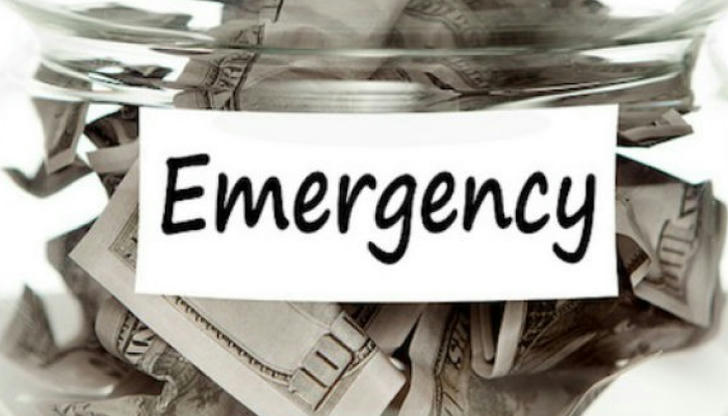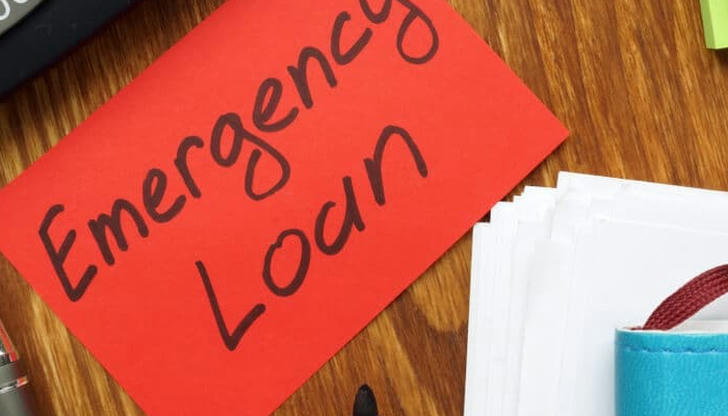Emergency Loans: A Guide to Quick Access to Funds
Emergency loans provide immediate financial relief for unforeseen expenses. These loans feature a fast application process and quick approval, with funds typically available within hours or days. They are suitable for medical emergencies, urgent repairs, or other urgent needs, and offer flexible terms, but may come with higher interest rates.
Definition and Features of Emergency Loans

Compared to traditional loans, emergency loans are approved more quickly and usually do not require collateral, making them suitable for cash flow in the face of emergencies. The main features of emergency loans include:
Quick approval:
The approval process for emergency loans is relatively simple, usually completed within a few hours to a few days, greatly reducing waiting time.
Unsecured:
Most emergency loans do not require collateral, which makes the application process more convenient, but also means that the loan interest rate may be higher.
Short-term repayment:
Emergency loans usually have a short repayment period, ranging from a few months to a year, which requires the borrower to have a strong repayment ability.
Flexible use:
Emergency loans have a wide range of uses and can be used for emergencies such as medical expenses, car repairs, and short-term living expenses.
Emergency loans can be divided into several common types, including credit card cash advances, personal loans, salary loans, and secured loans. Each type of emergency loan has its own specific characteristics and applicable scenarios. For example, credit card cash advances usually get cash directly through a credit card, but the interest rate is high; personal loans are unsecured loans applied for through banks or financial institutions, which are suitable for larger amounts of funds; salary loans are short-term loans that usually need to be repaid during the next paycheck.

Application process for emergency loans
The process of applying for emergency loans is relatively simple, but there are still some key steps to pay attention to to ensure successful funding:
Choose the right lender:
First, the borrower needs to choose a reputable lender. This can be a bank, credit union or online loan platform. Understand the loan interest rates, fee structures and customer reviews of different institutions, and choose the institution that suits you best.
Prepare basic materials:
Usually you need to provide basic personal information and proof of financial status, such as proof of identity, proof of income, bank statements, etc. Some institutions may also require a credit report.
Fill out the application form:
After selecting a lender, the borrower needs to fill out the loan application form. Make sure the information provided is accurate to avoid being rejected due to inconsistent information.
Wait for approval results:
After submitting the application, the borrower needs to wait for the approval result. After approval, the funds are usually transferred to the borrower's account in a short time.
In addition to the above steps, there are some precautions that can help improve the success rate of your application. For example, make sure you have a good credit score and avoid applying for loans frequently in a short period of time, which will affect your credit score. In addition, understanding the specific requirements and processes of each type of loan can help you prepare application materials in a targeted manner and increase the probability of approval.

Analysis of the pros and cons of emergency loans
When deciding whether to apply for an emergency loan, it is very important to understand its pros and cons. Here are some of the main pros and cons of emergency loans:
Advantages:
Quick access to funds:
Emergency loans are approved quickly, which can solve the problem of capital shortage in a short period of time and are suitable for emergencies.
Unsecured:
Most emergency loans do not require collateral, which lowers the application threshold.
Flexible use:
The use of loan funds is flexible, and borrowers can freely dispose of them according to actual needs.
Disadvantages:
High interest rates:
Due to the characteristics of unsecured and fast approval, the interest rates of emergency loans are usually higher, which increases the repayment pressure of borrowers.
Short repayment period:
The repayment period is short, requiring borrowers to repay the loan in a short period of time, which may be a challenge for borrowers with poor financial conditions.
Potential debt cycle:
If borrowers fail to repay on time, they may fall into a debt cycle, causing their financial situation to deteriorate.
When considering an emergency loan, borrowers need to weigh the pros and cons and ensure that they can bear the pressure of high interest rates and short-term repayments. If possible, give priority to other low-cost financing methods, such as borrowing from family and friends or using savings.

How to manage emergency loans
Effective management of emergency loans is crucial to avoiding financial stress and debt crises. Here are some practical suggestions for managing emergency loans:
Make a repayment plan:
After obtaining a loan, immediately make a detailed repayment plan. Clarify the monthly repayment amount and repayment date to ensure timely repayment and avoid late payment fees and credit losses.
Avoid excessive borrowing:
Emergency loans should only be used to cope with sudden and urgent financial needs. Do not over-borrow because of the desire to consume. Make sure the borrowed amount is within your repayment capacity.
Prepayment in advance:
If your financial situation allows, try to repay in advance. Prepayment not only reduces interest expenses, but also helps improve your credit score.
Check your financial status regularly:
Check your financial status and repayment progress regularly, adjust your spending plan in time, and ensure that you have enough funds to repay on time.
In addition, avoid applying for multiple emergency loans at the same time to avoid increasing repayment pressure and credit risk. Borrowers should maintain a good credit record, which will help them obtain more favorable loan terms in the future. At the same time, understand and use the repayment extension or installment services provided by the lender, and communicate with the lender in time when you encounter repayment difficulties to seek suitable solutions.
Conclusion
Emergency loans are an effective way to quickly obtain funds when there is a sudden financial need. Understanding the definition and characteristics of emergency loans, the application process, the pros and cons analysis, and how to effectively manage loans can help borrowers make wise decisions when dealing with emergencies. Although emergency loans have many advantages, they are also accompanied by challenges such as high interest rates and short-term repayments. Therefore, when applying for emergency loans, borrowers should fully consider their repayment ability and actual needs to avoid falling into financial difficulties due to excessive borrowing. I hope this article can provide you with valuable information to help you better use emergency loans to solve sudden financial problems when needed.
With reasonable planning and management, emergency loans can be a powerful tool for dealing with emergencies, but you also need to be wary of their potential risks and challenges. Borrowers should remain rational and cautious, and ensure their own financial health and stability while enjoying quick financial support.
